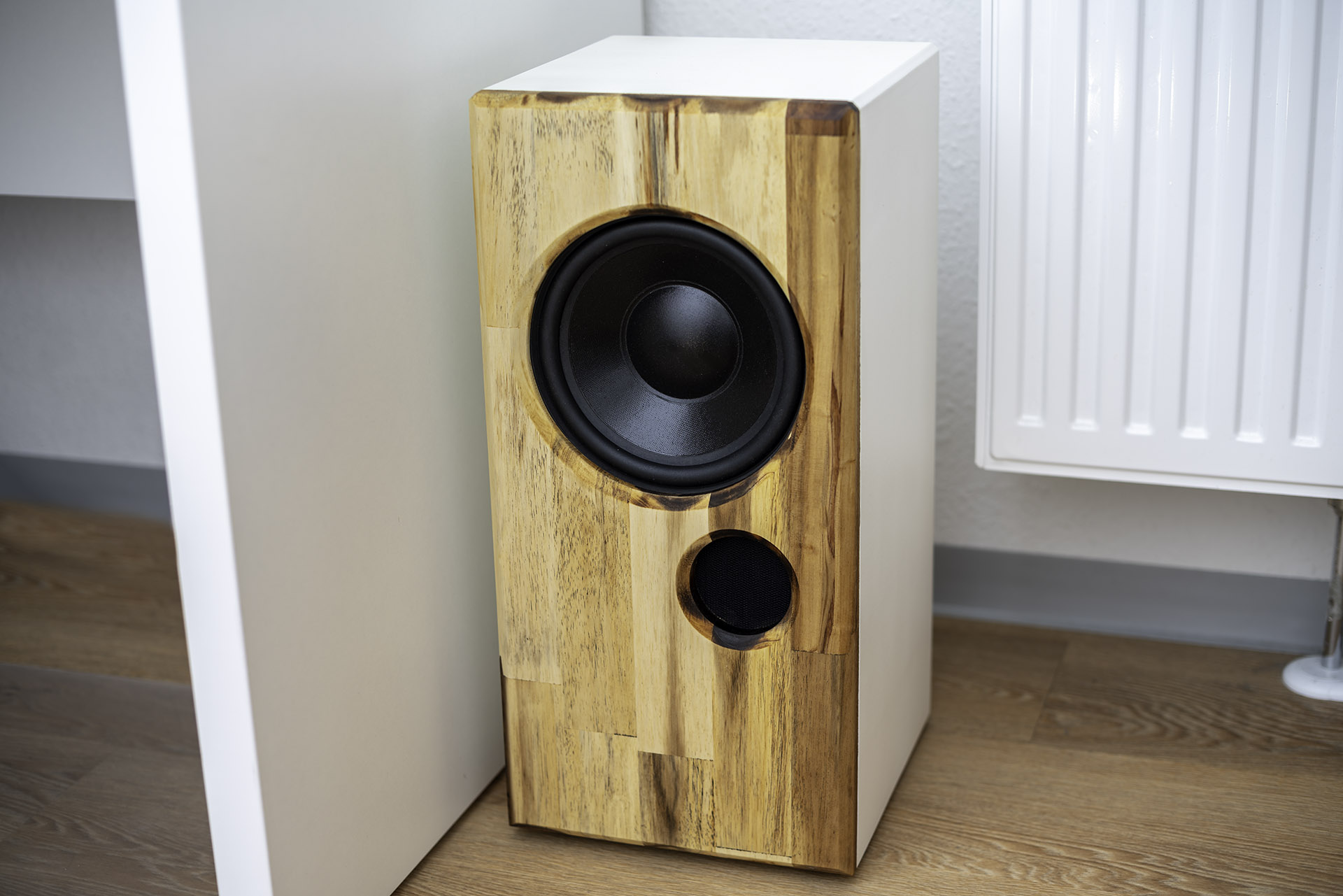I’ve been making speaker enclosures for a long time now. The first one that I started with was a project with my dad back in high school. Since then I have been making speaker enclosures / boomboxes out of antique suitcases. This was an aesthetic that I really enjoyed, but recently I’ve grown a bit tired of it. I am therefore trying to embark on a similar project but instead with woodworking at the center.
These are some examples of the speaker enclosures that I have made in the past:

I’ve made a decent number more of these types of things but did a terrible job of taking photos of the final product or the process. The biggest challenges are 1) working in a new medium and 2) trying to build a ported enclosure. All of the boomboxes that I have built have been sealed enclosures. This means that the air coming off the back of the speaker is trapped inside of the enclosure. This causes a loss in power, but it is preferable to having an open enclosure that is improperly designed.
This works in the following way: when an enclosure is sealed, the air behind the speaker is trapped inside and cannot help transmit sound. This means that it is lost power and therefore reduces the efficacy of a speaker. However, an open enclosure risks producing destructive interference. This is when the sound coming off the back of the speaker meets up with the sound coming off of the speaker out of phase. When these waves meet up out of phase, they end up cancelling each other out either partially or entirely. The effect can be much worse in this case versus loss of power in a sealed enclosure. Therefore unless you are willing to do a decent amount of design, it is best to stick with a sealed enclosure. However, in this project I am trying to leave my comfort zone and make a well designed ported enclosure. This is some of the weird labrynth design that goes into ported enclosures:

Image courtesy of [1]
A well designed ported enclosure will give a boost to a specific sound frequency. This helps improve the performance of speakers in specific frequency ranges. Because I am working with 2 mid ranges and 2 tweeters, I would like to have the mids get a bass boost at the lower end of their frequency response range. This works by designing the maze that the sound travels through to be exactly 1/2 wavelength long at that specific frequency. This means that when the two sound waves (the first one from the back of the speaker and the second one from the front of the speaker) meet up, they are perfectly in phase at that specific frequency, nearly doubling the amplitude. The wavelength of a certain frequency is: c = f*lambda, where c is the speed of sound in this case.
My final project is likely going to involve some woodworking, because this is a style that I have become really interested in lately. One cool looking ported enclosure that I’ve seen is this one:

Image courtesy of [2]
References:
[1] https://www.diymobileaudio.com/threads/ported-box-for-dayton-ho-12-help.336297/ [2] https://marcosprojects.wordpress.com/2018/11/04/8-ported-living-room-subwoofer/

3 Comments. Leave new
Max,
Awesome idea! I know next to nothing about speaker enclosure design but it seems like you have a solid plan of attack! I had no idea the amount of air trapped in the enclosure effects the speaker itself. Have you thought about potentially laser cutting the wood itself and incorporate a certain design or aesthetic?
Max, I think choosing something like this that you have a heavy amount of experience in is a sure fire way of ending up with a successful final project! I rally like that you are taking the step to try to make an open enclosure, this might make the project a lot harder but I think it really gives you a chance to learn something significant from it too!
Hey Max! I think this is an awesome idea! Especially since you have a background in the topic as well. I love the aesthetic and look of the wood too. I would personally purchase this type of speaker/boombox since the wood-working aspect and look is visually appealing and professional looking! I am very interested in seeing how this turns out and based off of you prior projects and your experience with this topic, I am expecting something truly amazing!